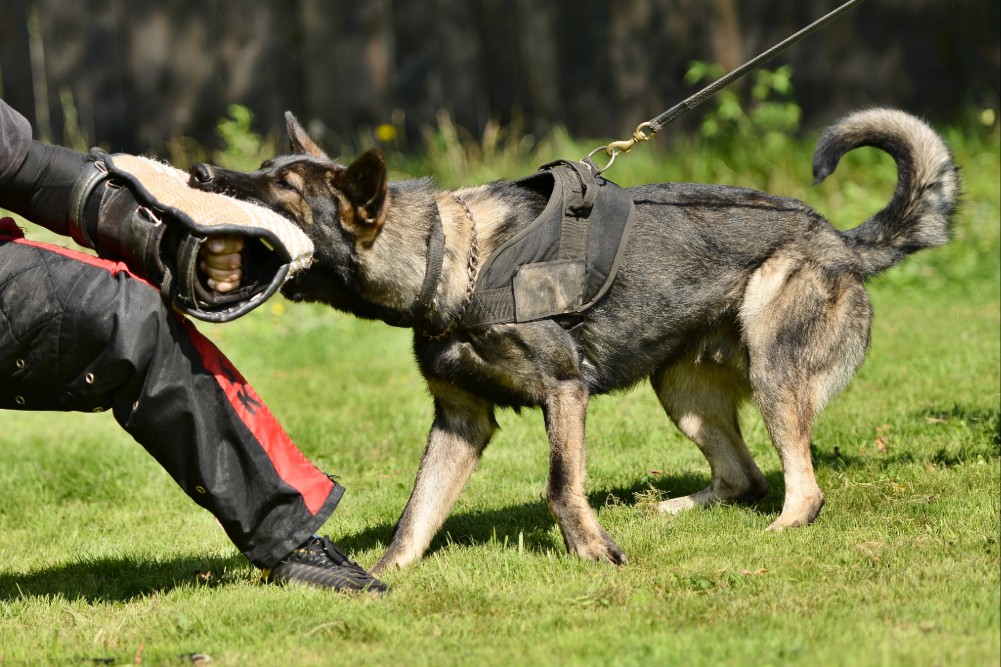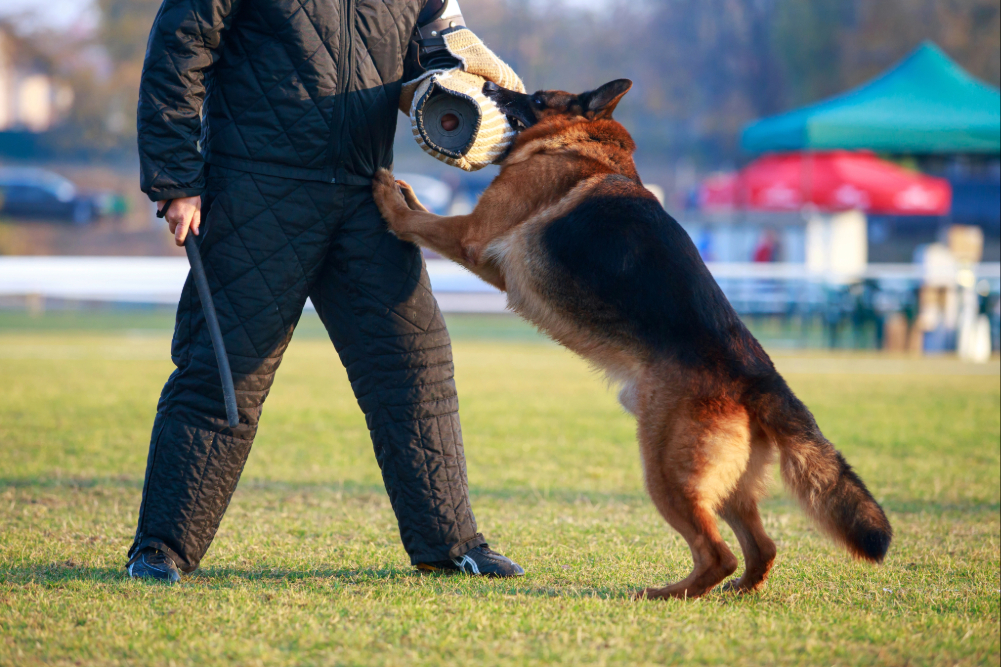
Protection dog training is a highly specialized area of canine education designed to equip dogs with the skills necessary to protect their owners and properties.
While it is often associated with guarding homes and providing security, the motivations behind this training go far deeper than just guarding. It is rooted in the dog's innate instincts, as well as the owner’s desire for a trained companion who can guarantee their safety.
The Role of Drives in Dog Protection Training
In protection dog training, understanding the dog’s drives plays a fundamental role in shaping its behavior. Drives are natural instincts that influence a dog’s response to various stimuli. For example, the prey drive is activated when a dog chases or attacks, while the defensive drive is used to protect a person or territory.
It is best for trainers to understand how these drives work to make sure that a protection dog responds correctly in real-life situations. The goal of this training is not to encourage aggression but to channel the dog’s protective instincts in a controlled manner.
A well-trained protection dog will be able to assess situations and act accordingly. This allows the safety of its owner while minimizing harm.
Building Trust between Handler and Dog
One of the most important motivations behind the program is the development of trust between the handler and the dog. This relationship is vital for the dog to perform at its best in both everyday situations and high-stress scenarios. Trust is built over time through consistent training, positive reinforcement, and clear, patient communication.
The training process also helps to build confidence in the dog, so it can make thoughtful, accurate decisions based on the situation at hand. Protection dogs must be able to quickly and reliably differentiate between a harmless stranger and a potential threat. This is why the strong, mutual bond between handler and dog is so essential for effective protection work.
The Importance of Socialization in Protection Dog Training
Socialization plays a critical role in protection dog training. Exposing dogs to various environments, people, and other animals helps prevent fear or excessive aggression that can compromise real-world reliability.
A socialized protection dog learns to differentiate between actual threats and harmless interactions. These experiences create a well-rounded dog capable of responding appropriately in diverse situations while remaining a balanced companion for its owner.
Training Methods: Positive Reinforcement vs. Balanced Training
The training often involves a combination of positive reinforcement and balanced training techniques. Positive reinforcement is used to reward desirable behaviors, encouraging the dog to repeat those actions. This method works well for building a dog’s confidence and reinforcing the bond between handler and dog.
However, it also involves balanced training, which incorporates various methods that take into account a dog’s natural instincts and temperament. While balanced training may involve correctional techniques, the focus is always on making sure the dog can respond appropriately without becoming overly aggressive.
The goal is to create a dog that is both obedient and protective, capable of responding to threats while remaining calm and controlled when not in use.
Why Protection Dogs Are Different from Regular Pets
Protection dogs undergo extensive training that goes far beyond the basic obedience expected of a pet dog. Unlike regular pets that may only be trained for companionship or basic manners, protection dogs are trained to react in high-pressure situations.
They are taught to respond quickly and effectively to protect their owners from threats. However, they must also maintain composure in everyday settings.
Training a protection dog requires a unique understanding of canine behavior and a commitment to shaping the dog into a reliable protector. Regular pets may not be suitable candidates for protection work, as they often lack the natural drives and temperament required for this specialized role. Protection dogs are carefully selected and trained to meet specific criteria, allowing them to perform their duties with precision and reliability.
The Role of Obedience in Protection Dog Training
Obedience is a cornerstone of the training. A protection dog must be able to follow commands quickly and reliably, regardless of the situation. This obedience sees to it that the dog can be controlled at all times, either in a peaceful environment or during an intense moment of danger.
Incorporating obedience training into this program helps to establish the dog’s ability to listen to its handler in any circumstance. This is best so that the dog will not act impulsively, but instead will react only when given clear commands.
Obedience also fosters discipline, which makes the dog a well-behaved member of the household when not performing protective duties.
The Difference between Guard Dogs and Protection Dogs
While the terms “guard dog” and “protection dog” are often used interchangeably, there are significant differences between the two. Guard dogs are typically trained to patrol a specific area and alert their owners of any intruders. They are often left to patrol alone and do not require the same level of obedience and training as protection dogs.
On the other hand, protection dogs are highly trained to protect their handlers in various situations, including active threats. They are trained to work alongside their handlers and respond to specific commands to neutralize a threat while keeping the handler safe. Unlike guard dogs, protection dogs are socialized and trained to respond to their handlers in real-time situations, making them more versatile and reliable.
Training for Different Types of Protection
Protection dog training can be customized depending on the type of protection required. Some owners may need a dog trained for personal protection. Meanwhile, others may need a family protection dog or an executive protection dog for high-risk situations. Each type of protection requires a different level of training and focus on specific skills.
Personal protection dogs are trained to protect an individual from threats, while family protection dogs are trained to protect an entire household, including children and pets. Executive protection dogs are often used by high-profile individuals who may be at risk of kidnapping or harm. Each type of dog must be trained for specific scenarios to work for the safety of its handler.
The Psychological Impact of Protection Dog Training
The training can also have a psychological impact on both the dog and the handler. For the dog, the training helps to channel natural instincts into useful skills, creating a sense of purpose. For the handler, having a trained protection dog can bring peace of mind, knowing that they have a reliable protector by their side.
The relationship between the dog and its handler often grows stronger throughout the training process. This mutual understanding and trust form the foundation of the dog’s ability to protect, creating a bond that can last a lifetime. The psychological benefits of this bond are felt by both the dog and the handler. This can lead to a more confident and secure relationship.
Why Choose Controlled K9 for Dog Protection Training?
Controlled K9 specializes in dog protection training that is tailored to the needs of each client. If you are looking for a personal protection dog, family protection, or executive protection, our trainers are here to help you select and train the perfect dog for your situation. We use a balanced approach to training and make sure that the dog can respond to threats while remaining calm in everyday environments.
Our commitment to aftercare is unmatched, offering unlimited private lessons after your dog’s training for continued success. Contact us today to learn more about how our protection dog training can give you the peace of mind you deserve.




Comments